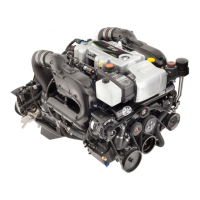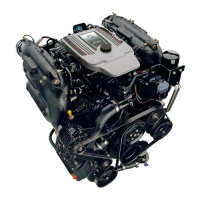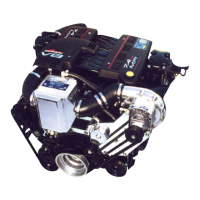Section 1 - Getting to Know Your Power Package
Page 14 90-8M0113925 eng DECEMBER 2015
Shift lever ‑ Shift functions are controlled by the movement of the shift lever. Shift into reverse by moving the shift lever to its
aft position. Shift into neutral by moving the shift lever to its center position. Shift into forward by moving the shift lever to its
forward position.
Throttle lever ‑ Throttle functions are controlled by the movement of the throttle lever. Increase the RPM by moving the throttle
lever forward. Achieve wide‑open throttle (WOT) by placing the throttle lever in its full forward position. Decrease RPM by
moving the throttle lever back. Achieve minimum RPM (idle) by placing the throttle lever in its full aft position.
Trim/tilt switch ‑ Refer to Power Trim.
Electrical System Overload Protection
If an electrical overload occurs, a fuse will open or the circuit breaker will open. The cause must be found and corrected before
replacing the fuse or resetting the circuit breaker.
NOTE: In an emergency, when you must operate the engine and cannot locate the cause for the high current draw, turn off or
disconnect all accessories connected to the engine and instrumentation wiring. Reset the circuit breaker. If the breaker remains
open, the electrical overload has not been eliminated. Contact your authorized dealer as soon as possible.
The circuit breaker provides protection for the engine wiring harness and the instrumentation power lead. To reset the circuit
breaker, push the red button. The circuit breaker is located at the starboard rear of the engine.
A 90‑amp fuse, located on the large post of the starter solenoid, protects the engine wiring harness if an electrical overload
occurs.
a - Starter
b - Starter solenoid
c - 90‑amp fuse—do not remove
d - Positive (+) starter stud

